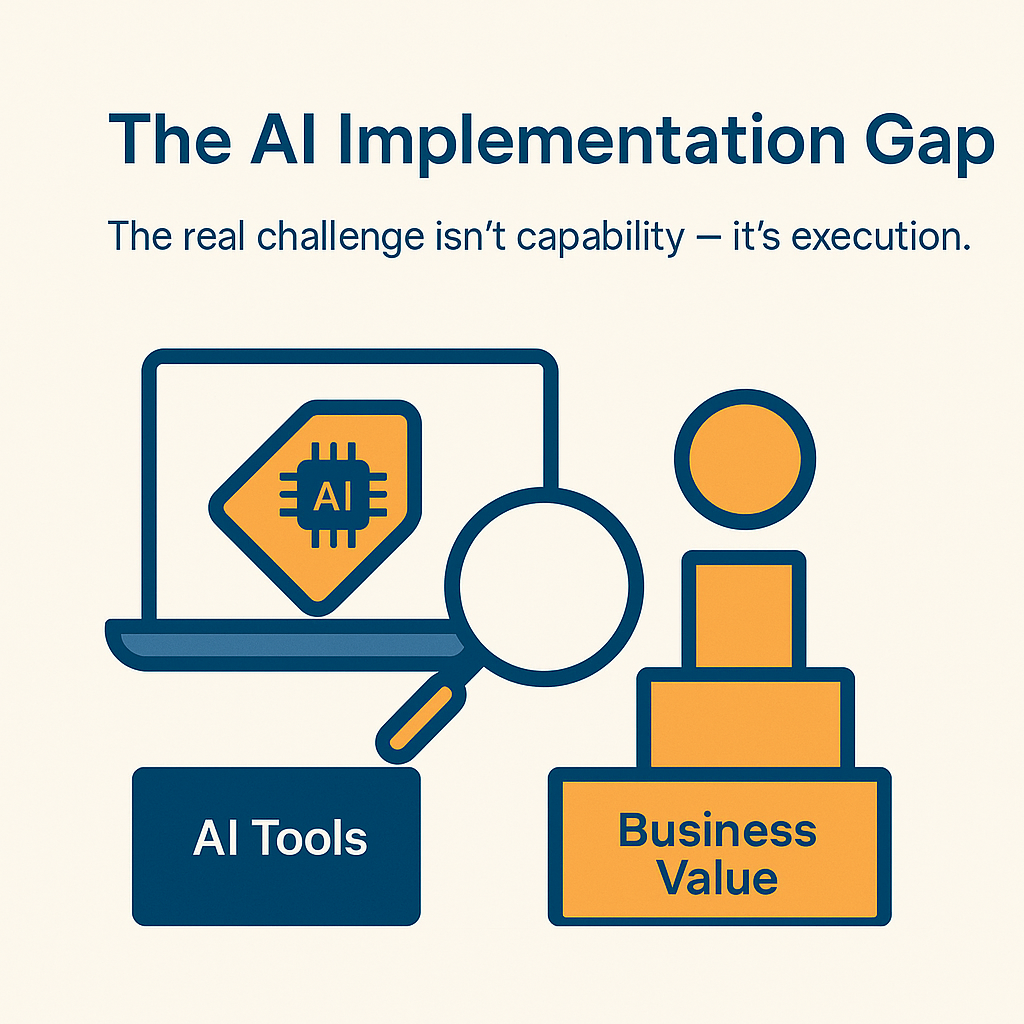The AI Implementation Gap
25 Sep

Artificial intelligence is like that expensive gym membership everyone buys in January: lots of enthusiasm, flashy marketing materials, but little follow-through. Most people feel better about having it rather than actually getting stronger.
Why Everyone’s Talking About It
Two market forces created the current AI obsession:
Technology Maturity: Large language models like ChatGPT reached consumer-grade usability in 2022–2023. For the first time, AI tools no longer require technical expertise, making them accessible to everyday business users.
Competitive Pressure: McKinsey estimates generative AI could add $4.4 trillion annually to global productivity. Whether or not that figure proves accurate, it has created board-level pressure to “do something with AI” — often without a clear understanding of what that should be.
The Implementation Reality
Most businesses treat AI like off-the-shelf software, expecting plug-and-play results. In reality, AI implementation is more like hiring a very capable intern: you’ll get results, but only with clear instructions and supervision.
The gap between AI’s capabilities and business application isn’t technical — today’s tools are powerful enough for most needs. The gap is organisational. Companies often lack systematic ways to identify where AI adds value versus where it creates expensive complications.
Real implementation requires process redesign, not just tool adoption. Too many businesses try to automate existing workflows instead of rebuilding them around AI’s strengths — like using a smartphone as nothing more than a calculator.
What’s Actually Working
The most successful AI implementations focus on three use cases:
Content Generation: Marketing copy, emails, and documentation, where human review catches errors before publication. Mistakes are obvious and easily fixable.
Data Processing: Analysing large datasets, extracting information from documents, and recognising patterns, with humans verifying results. AI handles volume; humans handle judgment.
Customer Service Augmentation: Supporting human agents with instant information lookup and response suggestions, rather than replacing them. This amplifies human capability instead of eliminating it.
The Bottom Line
The AI implementation gap exists because businesses are trying to automate their way to productivity, instead of using AI to enhance human decision-making and creativity.
Success comes from identifying specific, measurable tasks where AI provides clear value — and then building systematic approaches to capture that value while maintaining quality control. The technology is ready; most organisations aren’t.
Till next time,
Mpho



Recent Comments